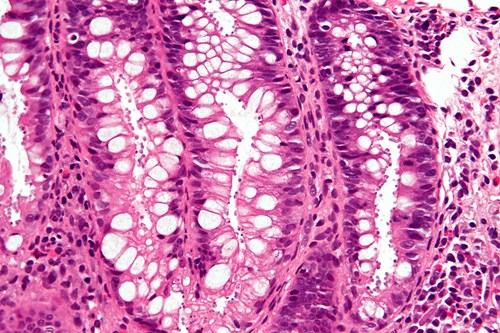Exposures associated with infection with Cryptosporidium in industrialised countries
Thu, 10 May 2018 12:35

Very high magnification micrograph of cryptosporidiosis
(cryptosporidium infection)
Cryptosporidium is a protozoan parasite of humans and other animals worldwide and is one of the greatest contributors to human diarrhoeal illness. Transmission can occur indirectly via contaminated food or water, or directly via contact with animals or other infected people. Risk exposures are often identified from outbreak investigations, but a subset of cases remains unexplained, and sources for sporadic disease and pathways to infection are still unclear.
For the full article, entitled: 'Exposures associated with infection with Cryptosporidium in industrialised countries: a systematic review protocol', see the May issue of: BMC Systematic Reviews.
